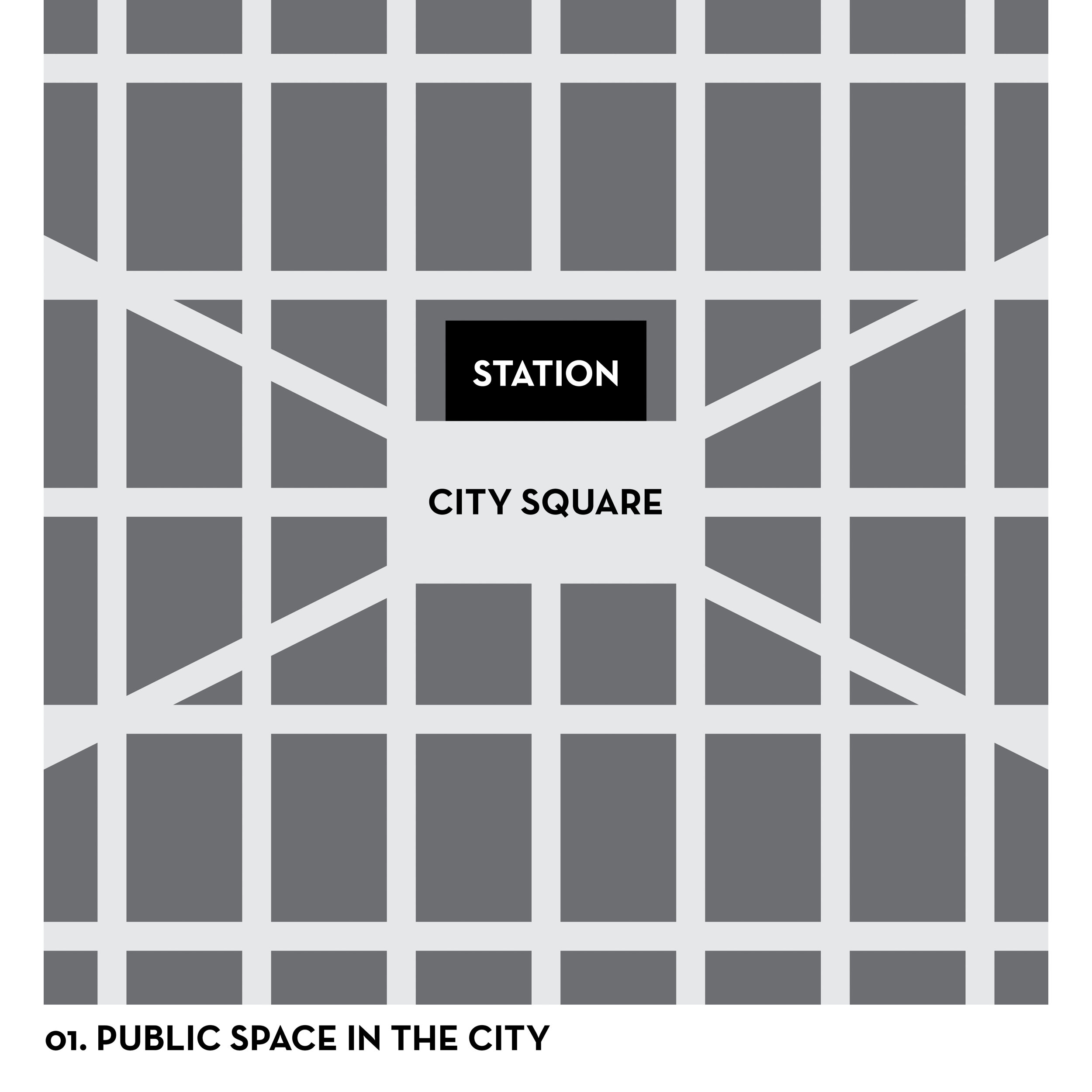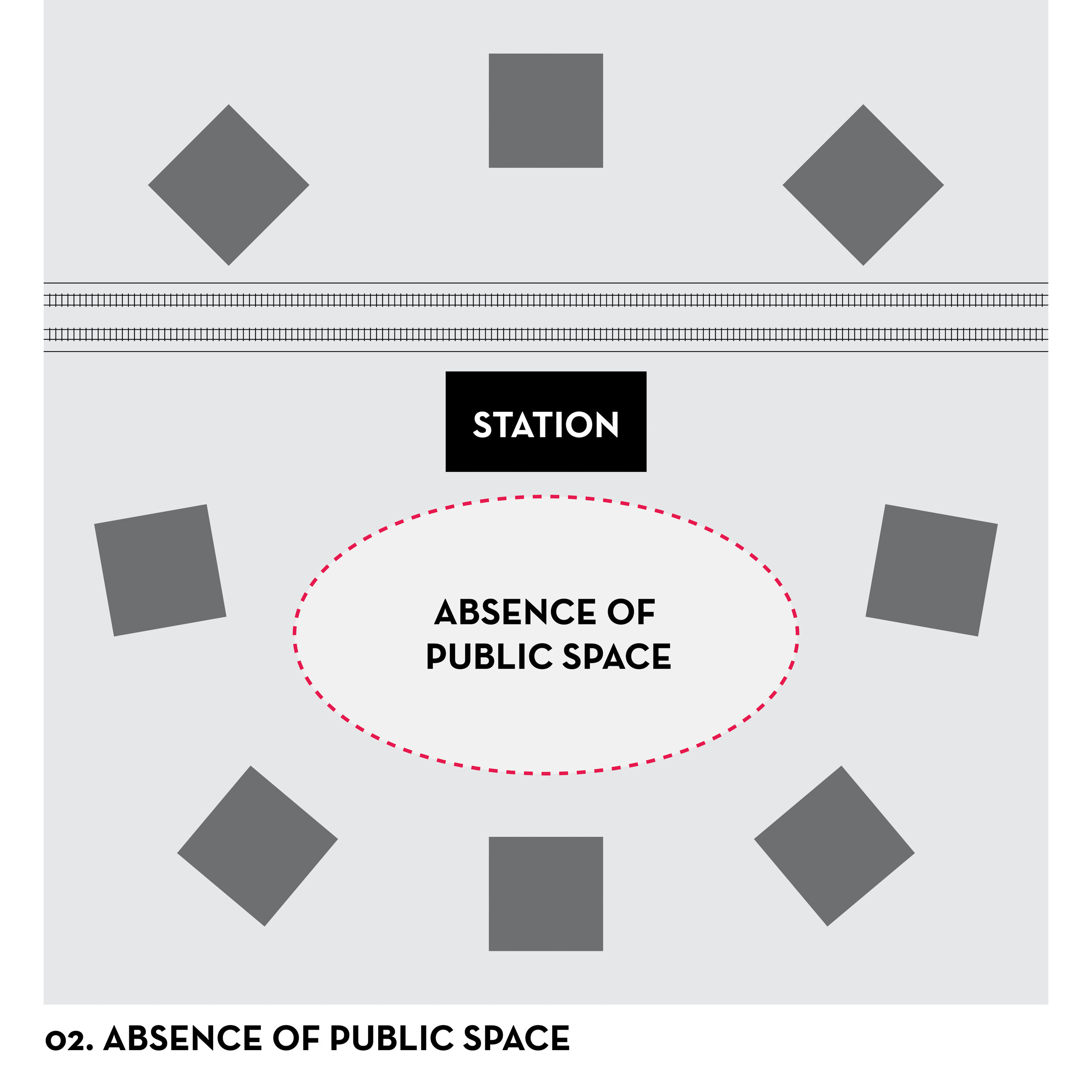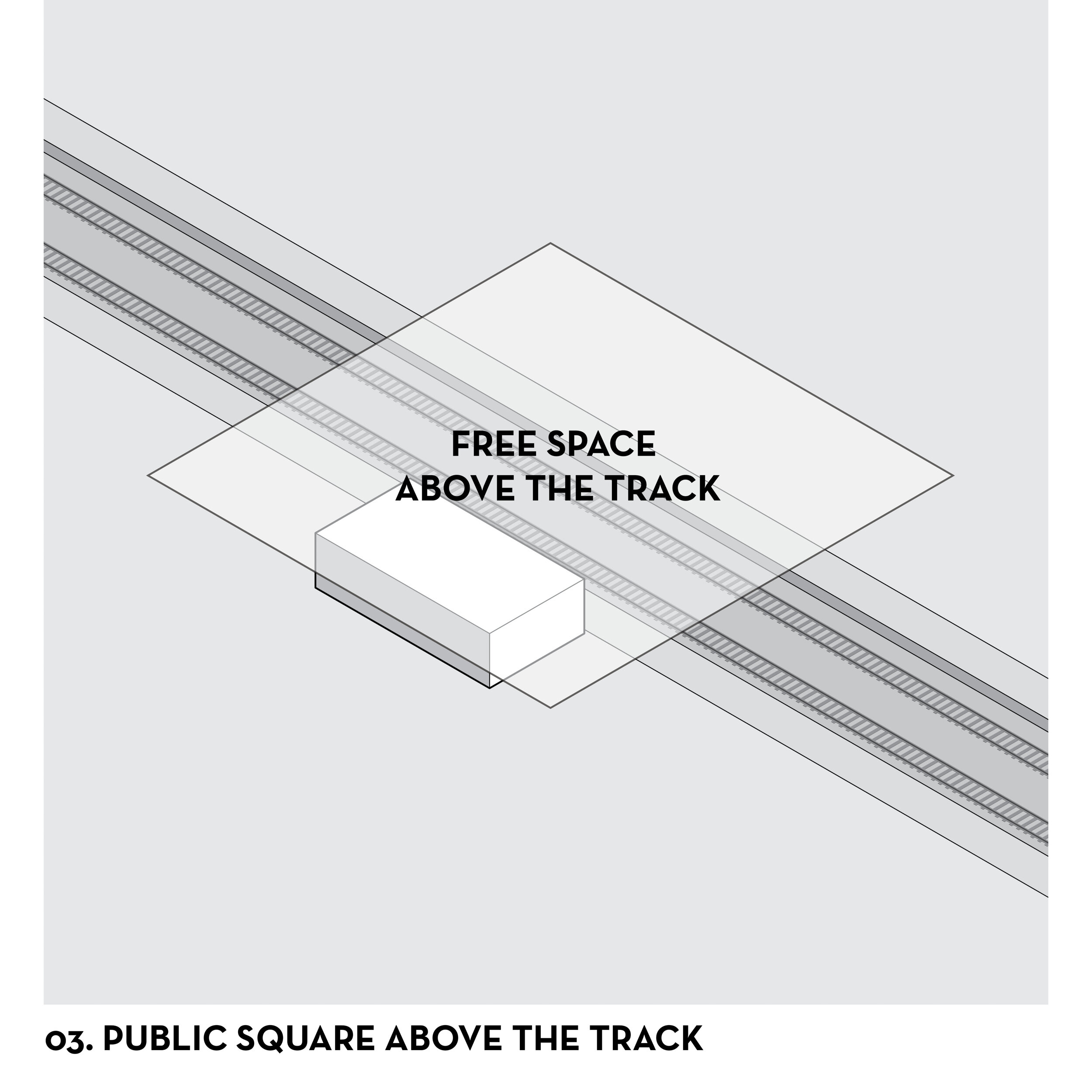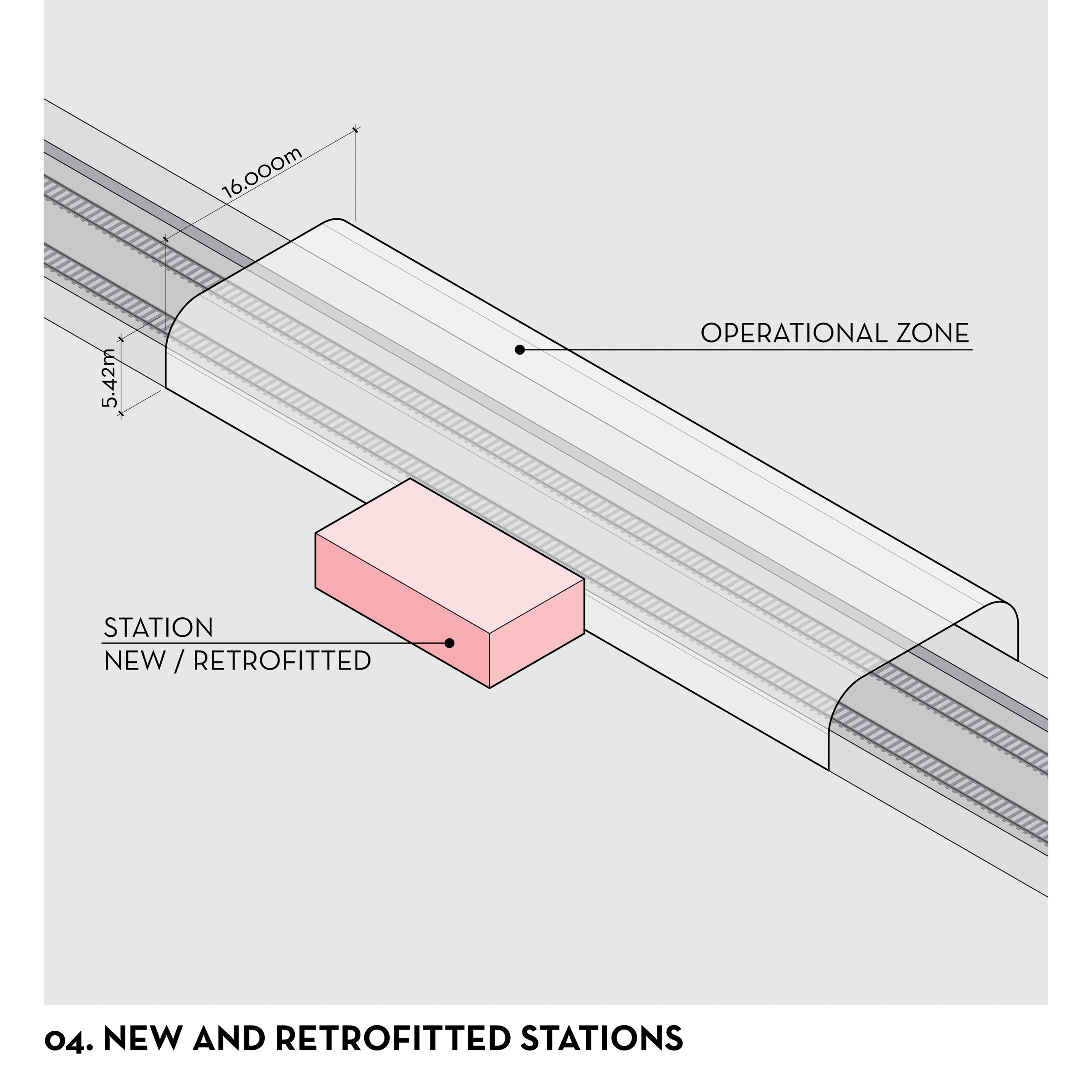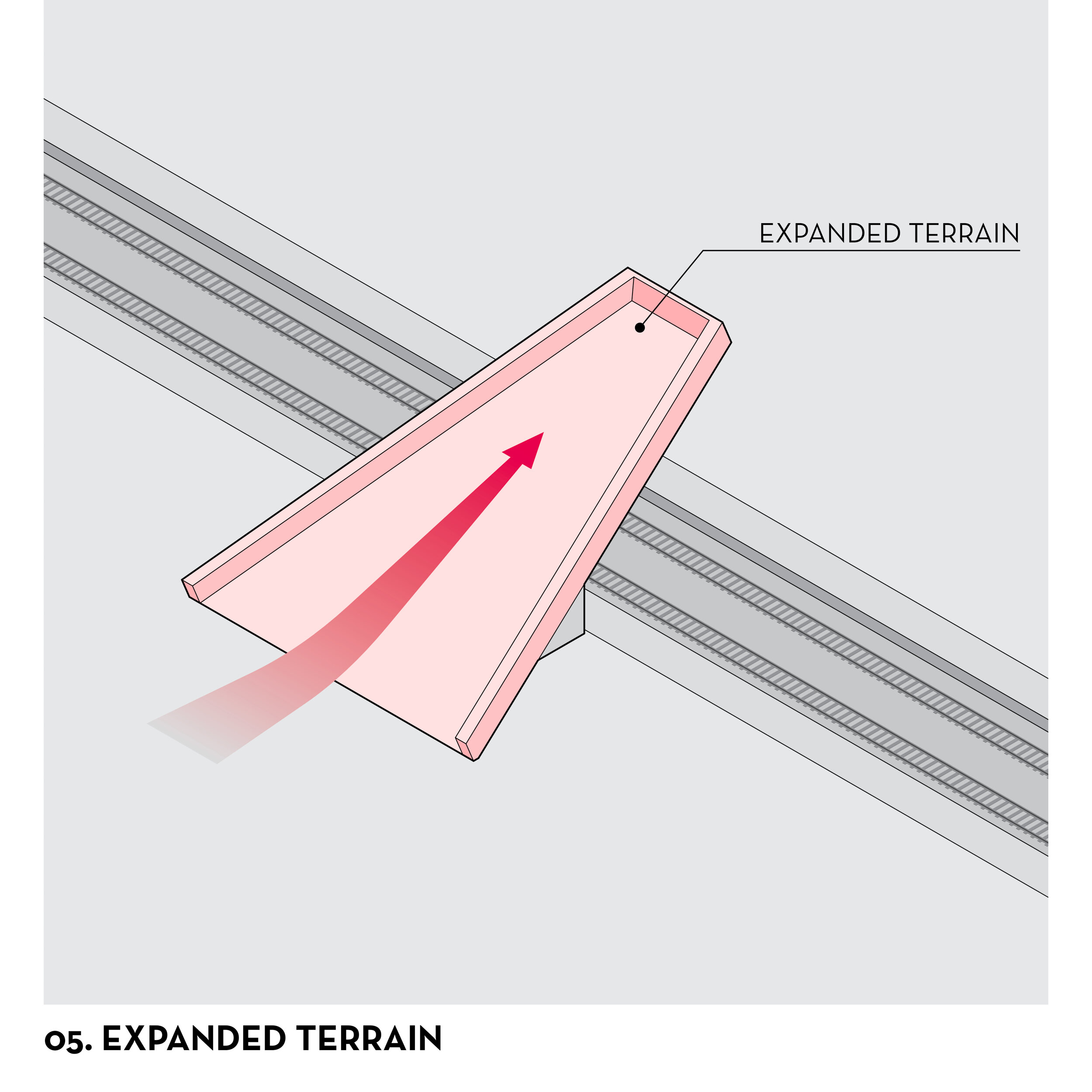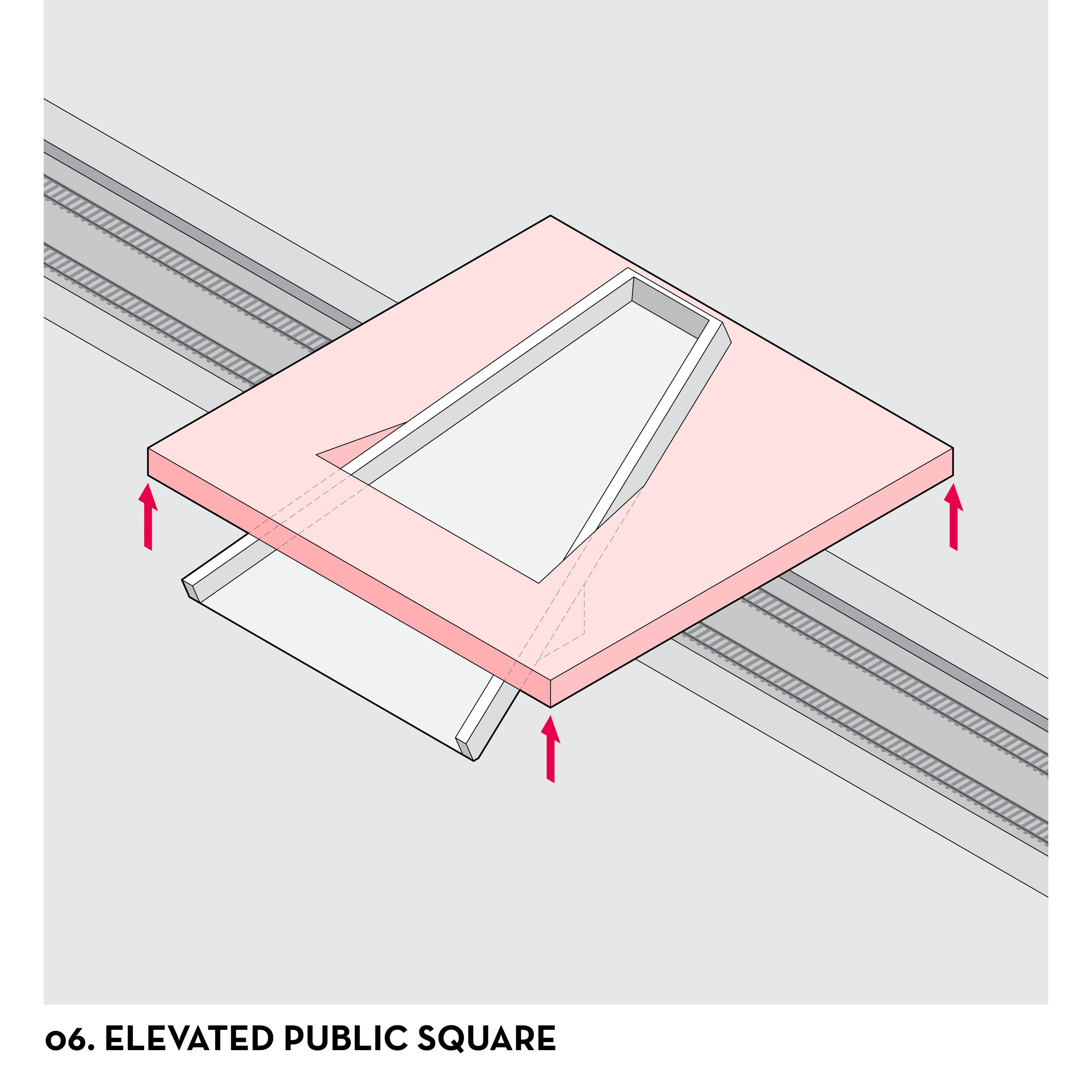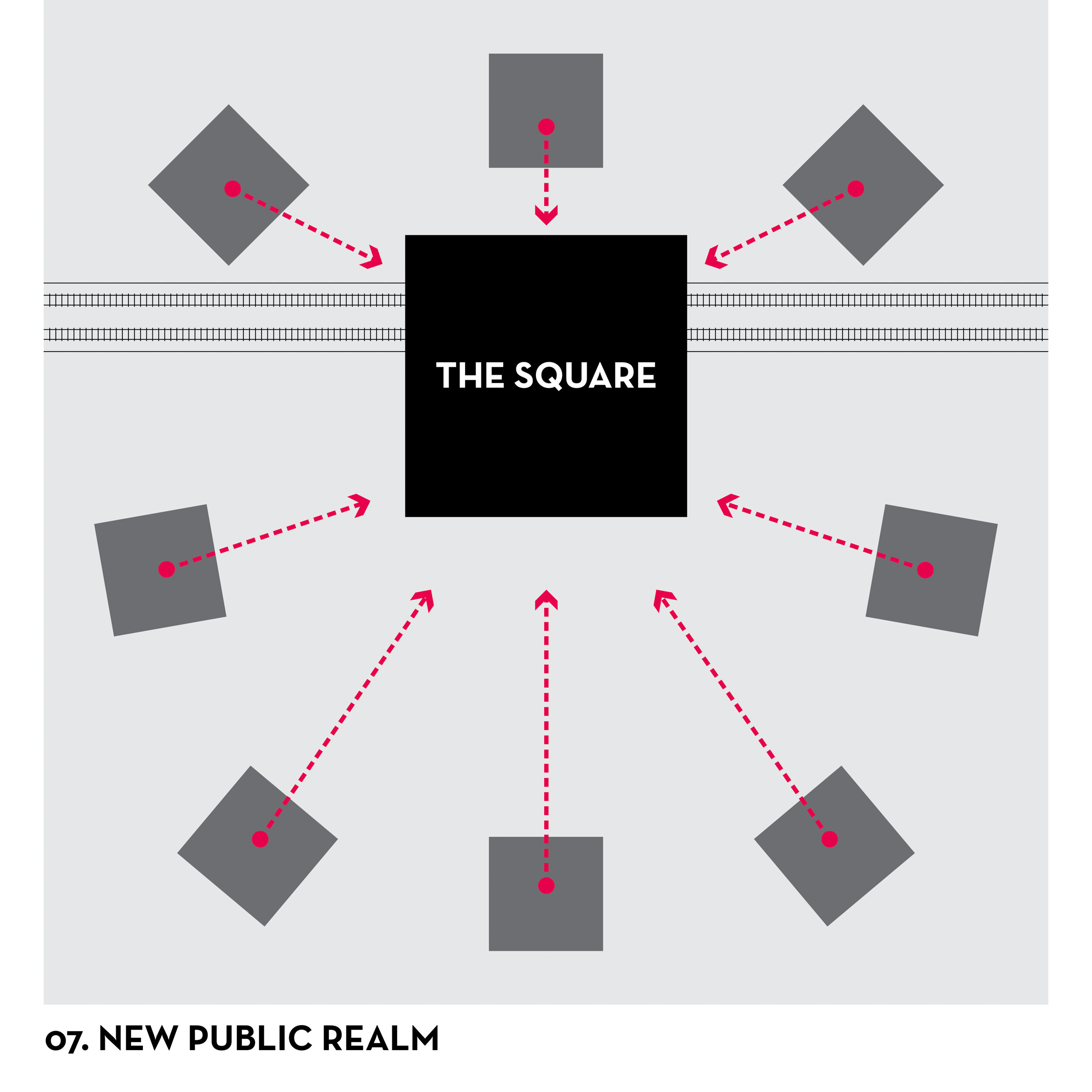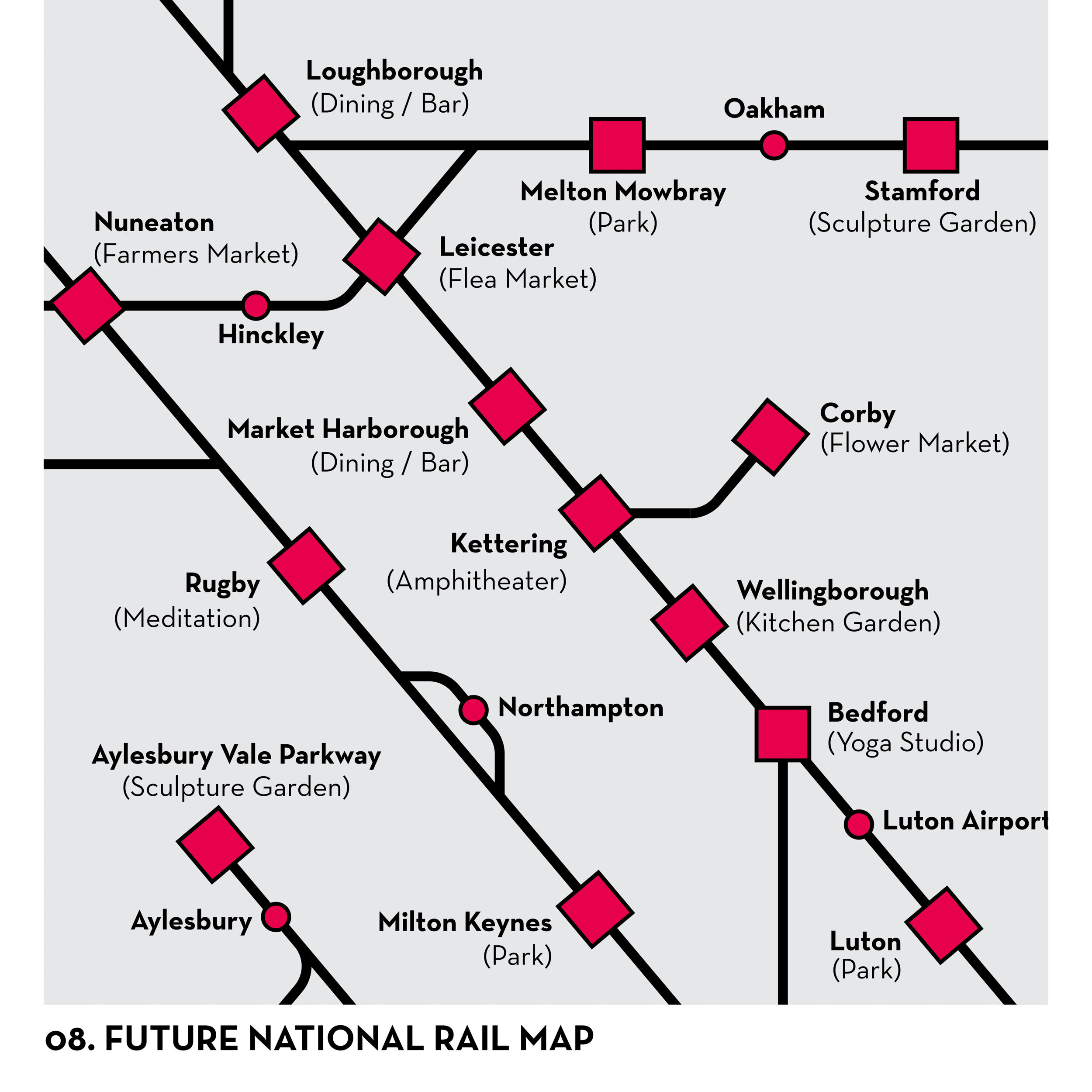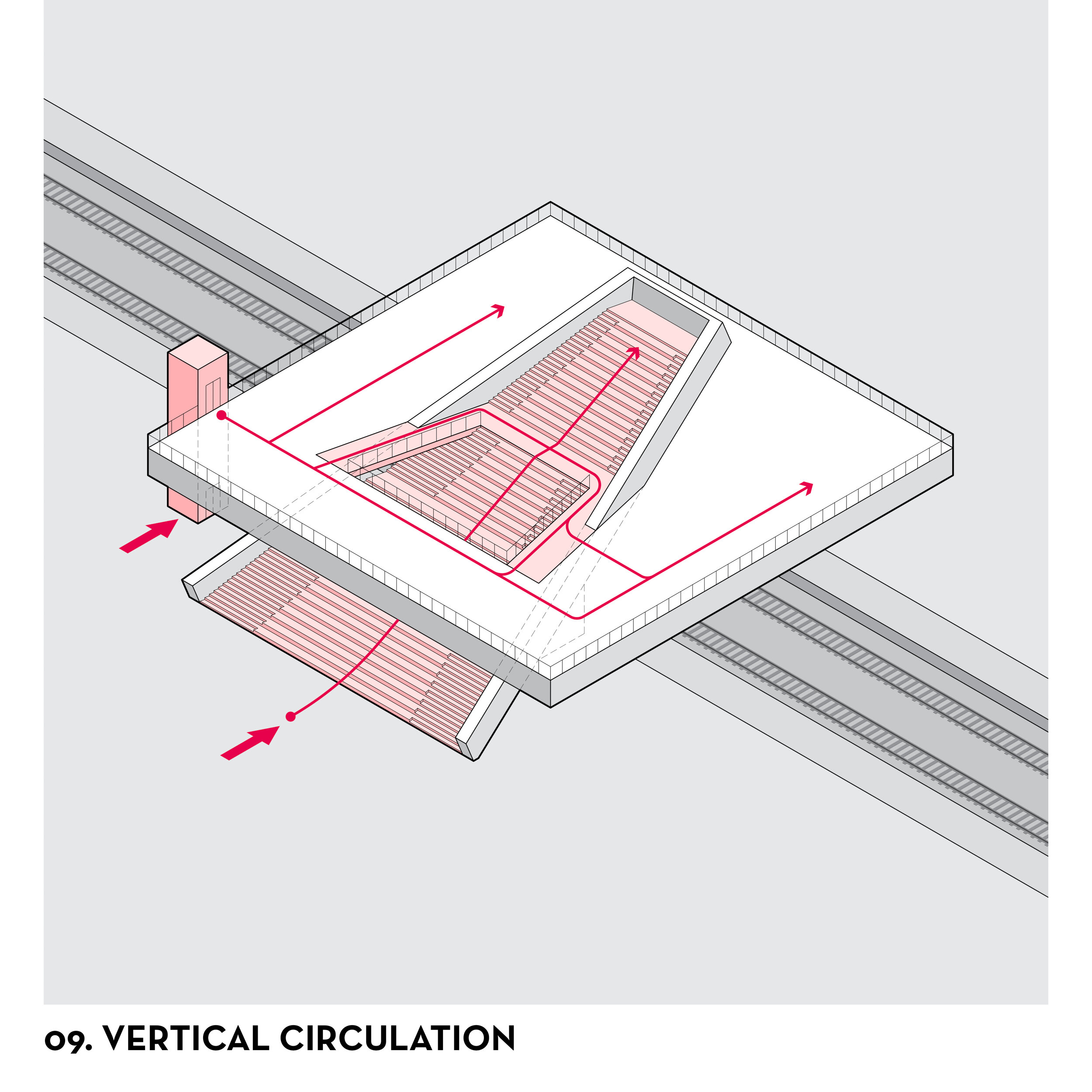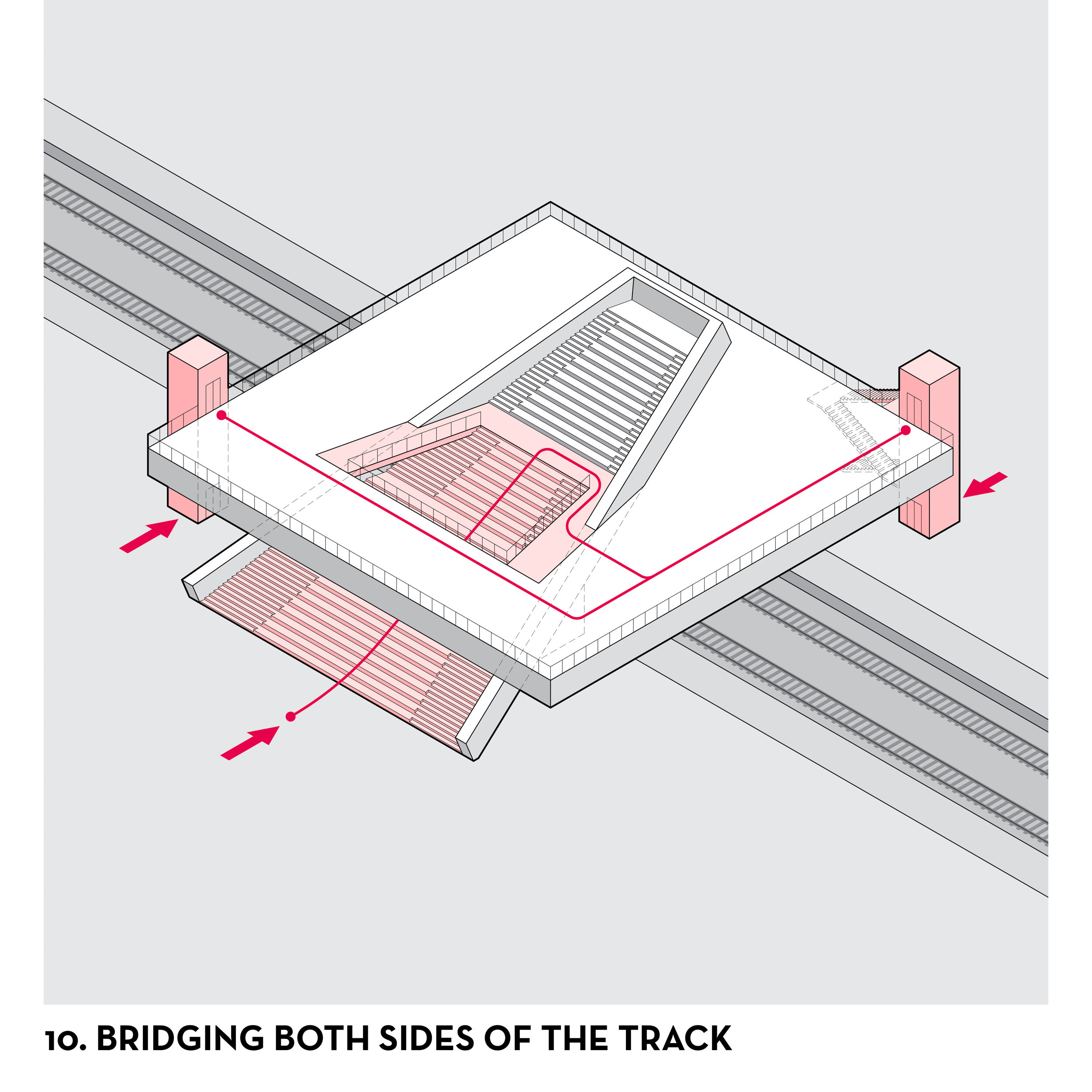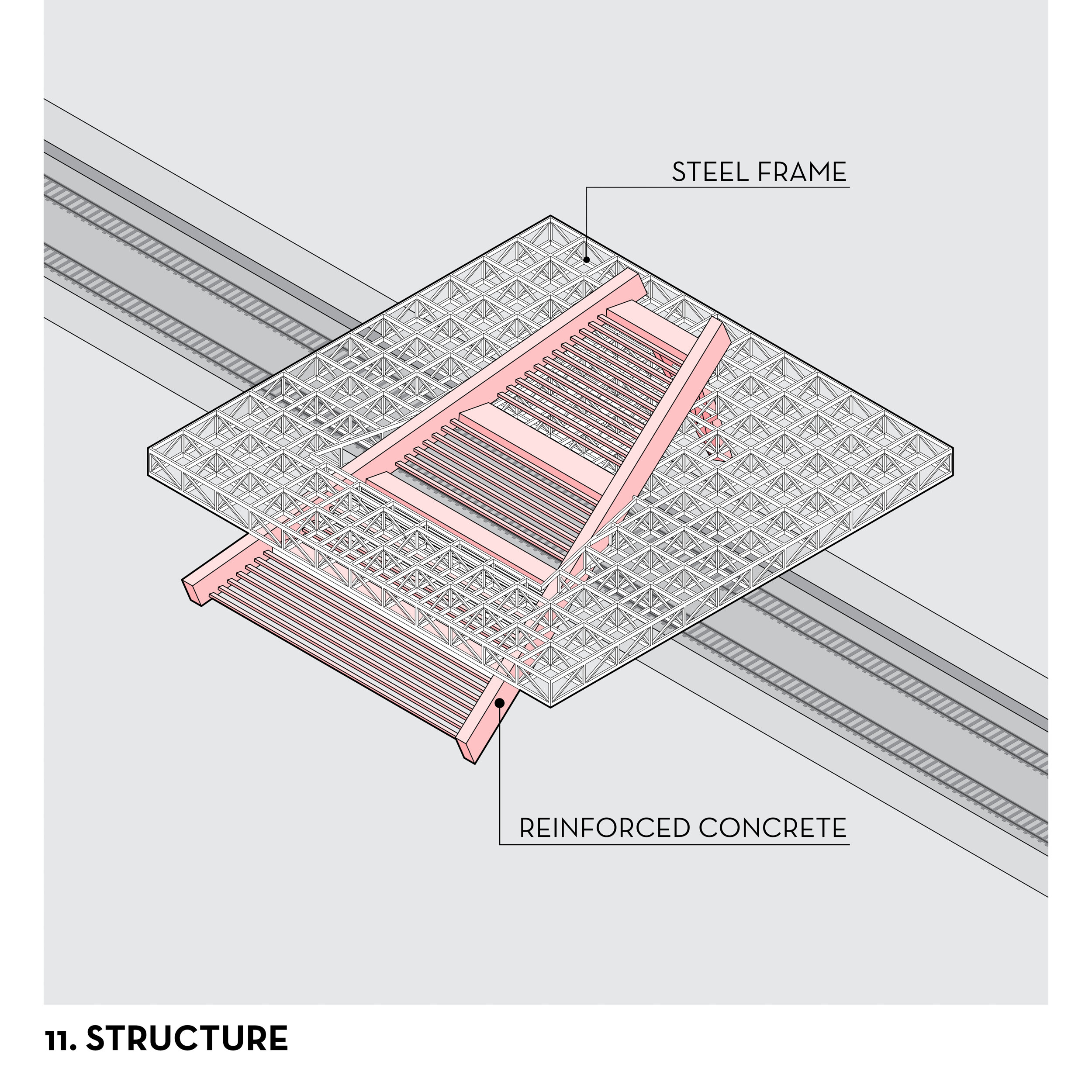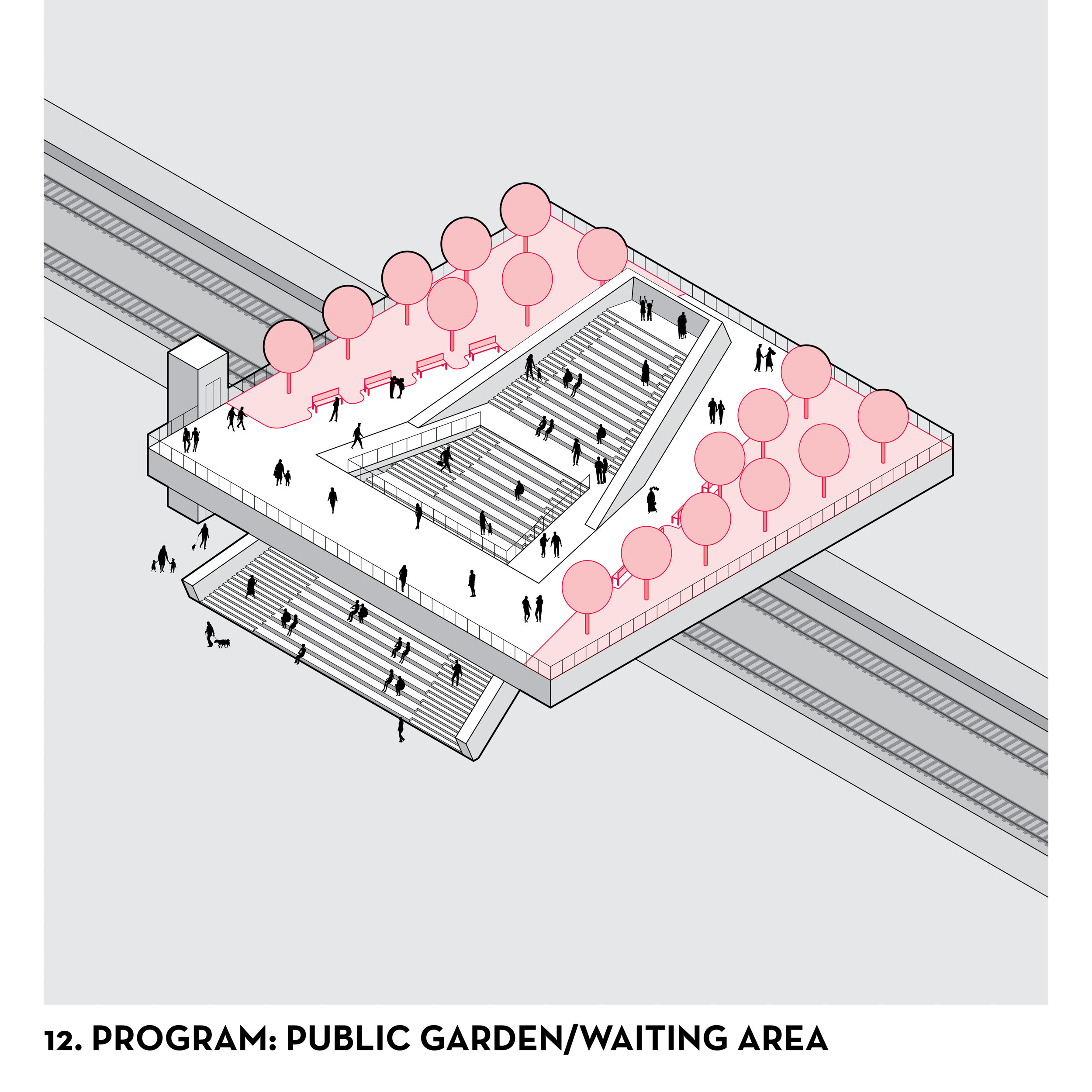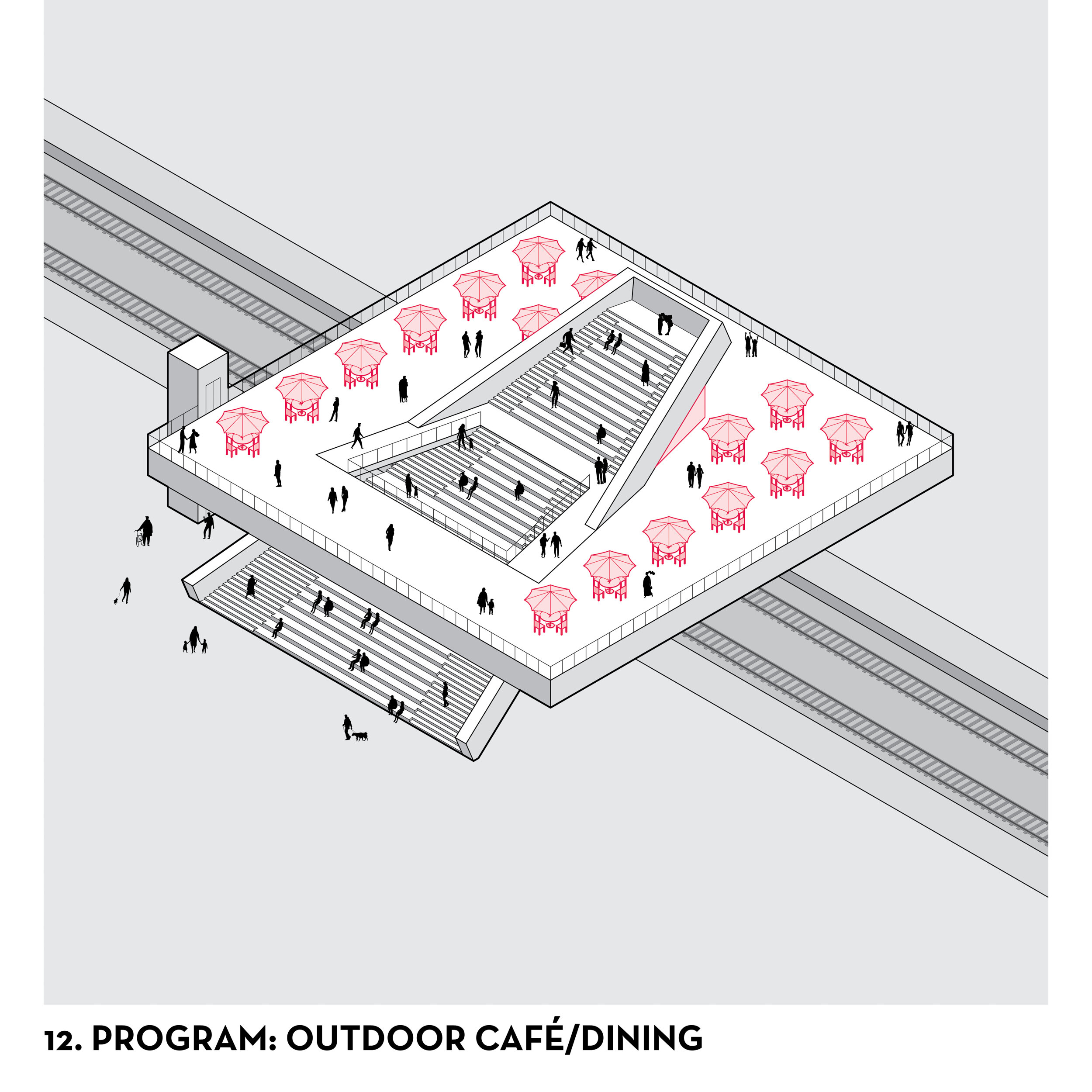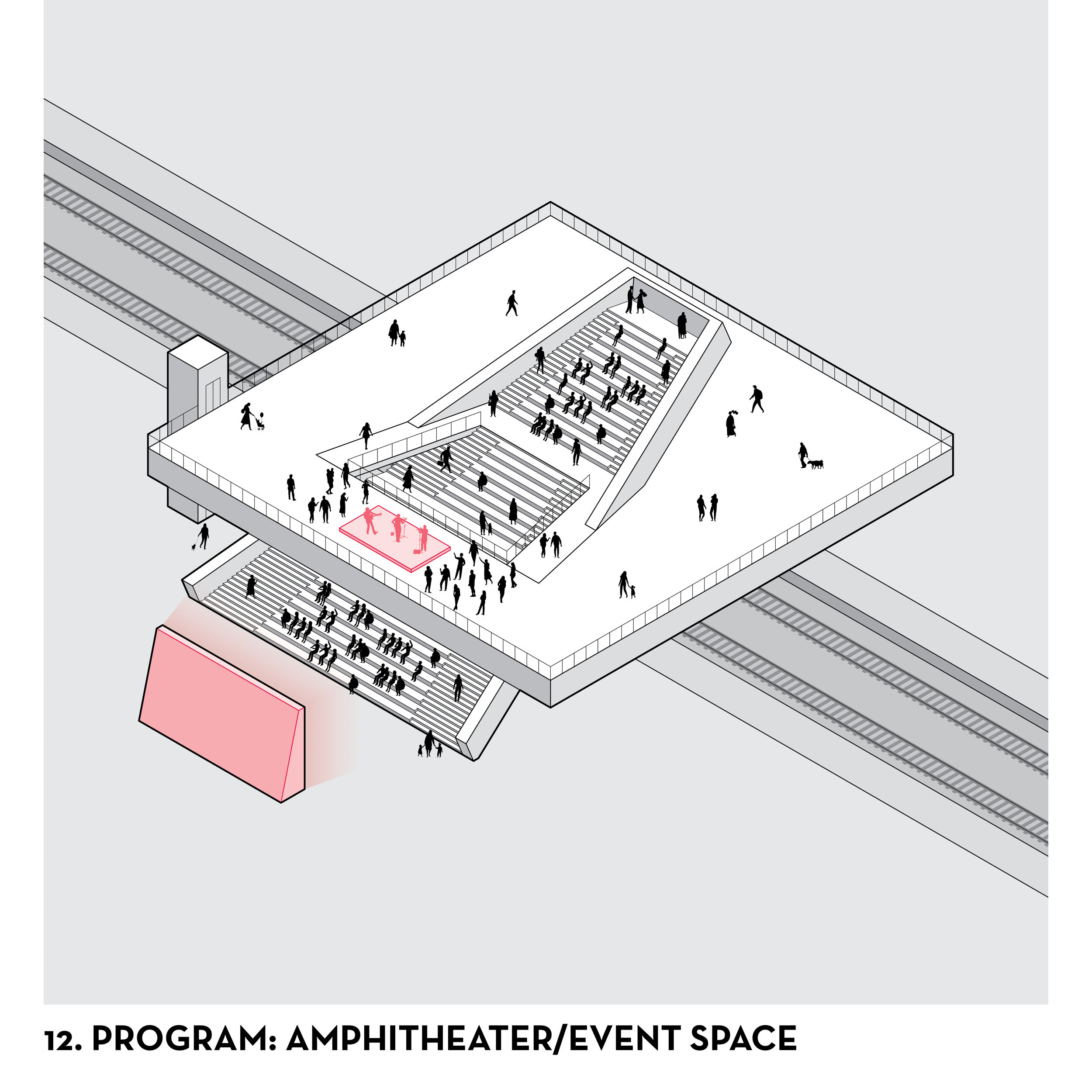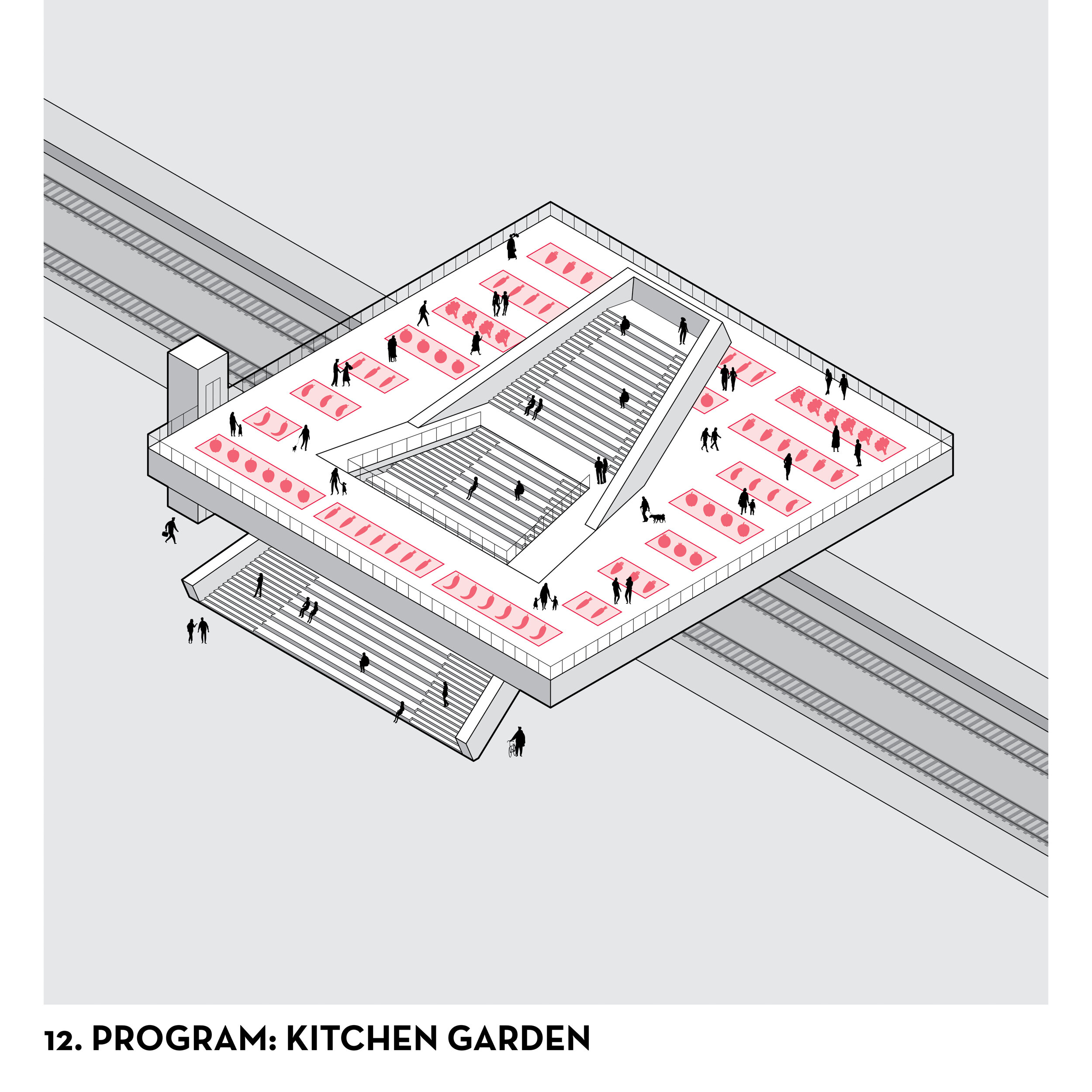(01) Public space at the train station in the city is not only the center of transportation, but also the center of social and cultural interactions. (2) Suburban train stations do not have active public spaces for local neighborhoods. (03) What if we could build a public square above the train station and track? Each station has different conditions, but the space above the track on the railway is free to use at most suburban train stations. (04) The train station can be a new building or a retrofitted existing station. (05) The terrain stretches toward the track and embraces the new or retrofitted train station. (06) The public square is elevated above the track and interlocks with the expanded terrain. (07) The square will become the new typology of suburban train stations as a landmark and public space for the neighborhoods. (08) Each station will have its own program on the square. The new map shows all unique programs with stations’ names for local communities and tourists. (09) Stairs and seating are added on the sloped terrain and will be used as multi-functional space. The elevator will be used to make the space accessible to all people. (10) If a bridge is required on the station, an additional staircase and elevator will be built on the other side. (11) The main structure is the reinforced concrete supported on either side of the track, and it supports the raised steel frame structure. (12) The square is a multifunctional outdoor space. It is like a blank canvas. Diverse programs will be adapted for the square. Each station can be characterized by a unique program and identity that reflects its own neighborhood.



